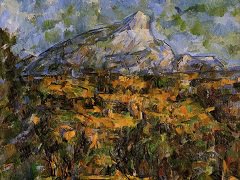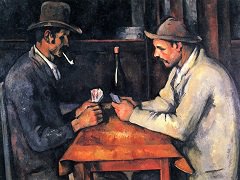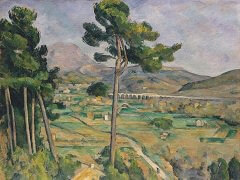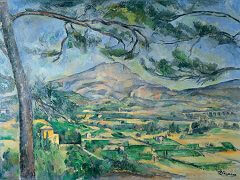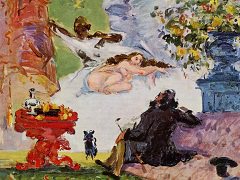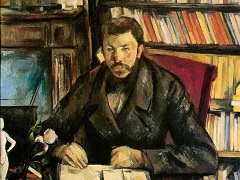The Bridge at Maincy, 1879 - by Paul Cezanne

Between April 1879 and March 1880 Cezanne lived in Melun, where, inspired by the poplars and rivers, he worked on the hills at Mee. The combination of trees and water is a recurring theme in his work. Although he painted the large stretch of water of the Bay of Marseilles at L'Estaque, he also liked the running water of streams and rivers and the smooth surface of lakes.
No human is present in this landscape, which was painted on the banks of the River Almont in the little village of Maincy, to the east of Melun, towards the end of spring or at the beginning of summer in 1879. The composition avoids alL anecdotal or sentimental details, and so differs from landscapes of Claude Monet, which show peasant women or washerwomen by the water's edge.
Cezanne's landscape does not pretend to be anything other than what it is: a tangle of geometric shapes formed by the tree trunks and branches and by the bridge, which stands out from the colourful but formless background of the foliage and water. A wooden footbridge linking two stone arches runs across the centre of t composition. The painting is entirely built up of slanting squarish or oblong brush strokes, which hold the painting together and give an impression of strength and solidity.
Cezanne began to experiment with this mosaic-like method working at Melun, and it marks the beginning a new style of painting that went against the Impressionists' practice of breaking up forms in space.


